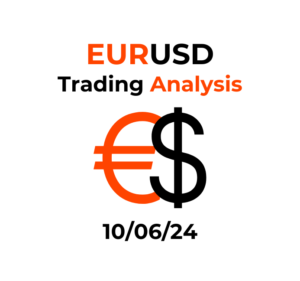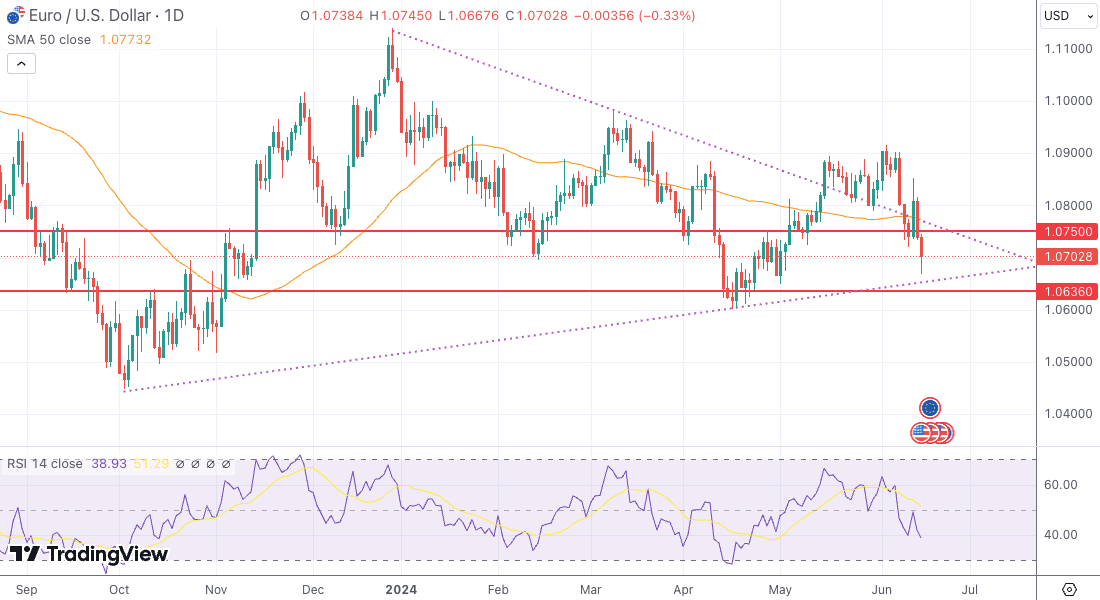Key Takeaways:
- The EUR/USD pair remains confined within a narrow trading range, with significant support at 1.0636 and resistance near 1.0750.
- US Retail Sales data will be pivotal this week, influencing dollar movements and expectations for Federal Reserve rate cuts.
- ECB officials continue to stress the importance of keeping inflation close to 2%, challenging the prospects of an immediate rate cut.
Market Dynamics and Recent Performance
The EUR/USD pair is poised to start the week on a cautious note, consolidating around the 1.0700 level. Investors remain on edge due to ongoing uncertainties in the Eurozone, particularly the political instability in France, which continues to weigh heavily on the Euro. The looming possibility of Marine Le Pen’s far-right National Rally forming a government has raised concerns about a potential financial crisis in France, significantly dampening the Euro’s appeal.
Meanwhile, the US Dollar’s movements are influenced by fluctuating expectations surrounding Federal Reserve policy, with the dollar index hovering near critical levels of 105.50.
Technical and Fundamental Influences
From a technical standpoint, EUR/USD has recently encountered resistance around the 1.0750 mark, a level defined by the downward trend line from late December 2023. The pair’s movement has been constrained within a symmetrical triangle formation on the daily chart, with immediate support seen near 1.0636. This support level aligns with the upward-sloping trendline originating from October 2023 lows and the horizontal cushion from April 2024.
On the fundamental front, European Central Bank officials remain cautious about rate cuts, emphasizing the persistent risks of inflation driven by wage growth. ECB’s Martins Kazaks reiterated the bank’s commitment to maintaining inflation close to 2% by mid-2025, suggesting that the ECB is not ready to ease its monetary stance prematurely.
Looking Forward
Investors are likely to focus on the upcoming US Retail Sales data for May, set for release on Tuesday. Market expectations are for a modest increase of 0.3%, following a stagnant April. This data point will be crucial in shaping expectations for Federal Reserve’s rate cuts, with traders weighing the possibility of a single rate cut versus two cuts this year. Federal Reserve officials have varied in their stance, with some advocating for caution until more data is available, despite recent signs of softer inflation pressures. Chicago Fed President Austan Goolsbee highlighted the relief from May’s inflation data but stressed the need for consistent data before any policy shift.


